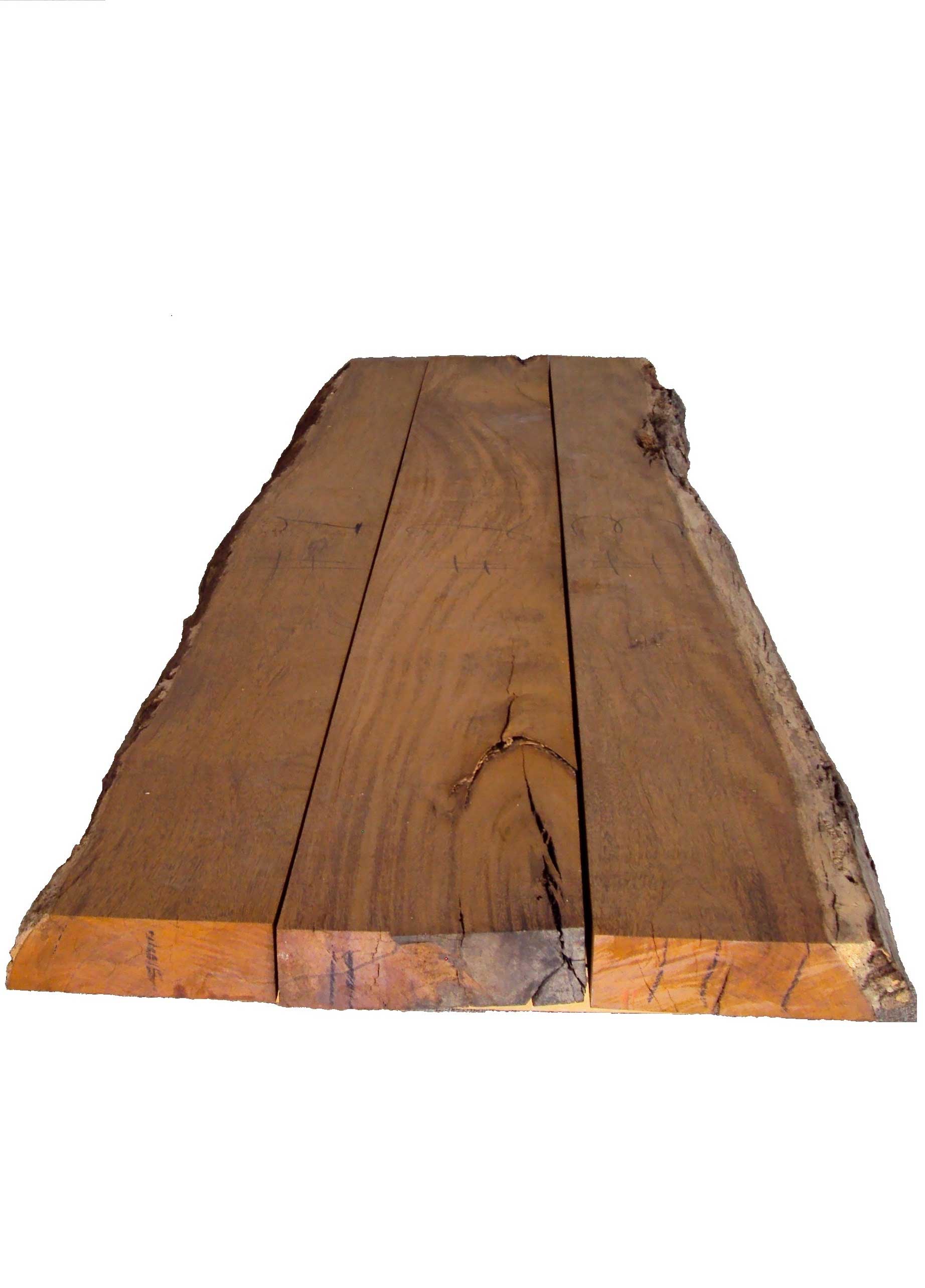How to understand Wood Slabs properly

Wood slabs can come in two forms, live edge slabs and straight edge slabs. Arising as part of the Arts and Crafts movement in America, live edge wood made its entrance with a bang between the 1880s and the 1910s. The trend of incorporating live edge wood products into interior décor was also vigorous in Japan during the 1940s. Straight edge wood is cut on rough and live-edge stock boards for certain furniture schemes that require smoothly cut and straight edge along the sides.
1. What do "live edge" and "straight edge" mean?
According to wood artisans, "live edge", also known as "natural edge", refers to the tree's living part, in other words, the outer rings. The two terms can be used interchangeably. The formation of the natural edge results in the cutting of log into slabs and leaving bark, holes, gnarled pieces with knots, and curved spaces within a piece, which reveals the natural edge of the tree.
Working with a live edge requires a respect for the wood as a living entity, which is a principle our woodworkers keep close to heart. A natural edge slab that exposes its natural form and has a certain functionality is a fruitful idea-generating process to each design. Trees are Mother Nature's spectacular architect in a fact that each tree is uniquely engineered by her, requiring every one of our cuts to be made, conscious of its uniqueness.
Customers who come to us in search of live edge slabs are exceptionally fond of the sustainably harvested and unprocessed natural edge slabs from the tree's heart.
On the other hand, straight edge slabs are a product of skilled engineering of the wood board. While a live edge slab is curvy and accentuates itself along the line, a straight edge slab is as its name suggests, smoothly finished straight edges on the sides. Rough lumber can come in about any shape and condition and it is very rare to find naturally occurring straight edges. There are ways to tame rugged-edge boards. One typical method requires a simple straight-line jig which can be used repetitively to mill a whole stack of lumber.
At Wooderra, the formula of live edge slabs and straight edge slabs include nature beauty, craftmanship, simplicity, and intricacy.
2. What is the manufacturing process of live edge slabs?
An interesting technique unknown to the public is the intentional cutting that leaves in deformations on a wood piece. Harvesters of live edge wood explain this technique saves the wood from the scarp pile and simultaneously makes use of the tree more, making it a sustainable product, made in a sustainable fashion. When the saw starts cutting through the entire tree, live edge wood and normal boards are kept separated from one another.
More specifically in table manufacturing, firstly, perfectly 2-3 straight edges may be cut using a circular saw. Next, the manufacturers may leave the curves for the other edges of the board. Corner pieces may have two straight edges and a third side with a bark-edge curve may be detected.
What's more, pure live edge slabs do not contain any kind of finishing of the bare wood surface. Depending on particular requests, live edge slabs might be stained to match a color scheme, keep bugs at bay, and preserve the natural wood fibers.
3. What kind of projects can wood slabs be used for?
Live-edge slabs are used for rustic style houses, log cabins, and in recent times, business interiors which are trendy, yet classy.
Traditional farm houses can take advantage of live edge slabs for picture frames, bed posts, mirrors; while straight edge slabs are used for suspended floating kitchen shelves, and everyday furniture.
The flexibility goes further in log cabin design, as live edge slabs and straight edge slabs can be incorporated in building ceiling fan blades, dressers, door frames, and so on.
Contemporary trends in business interiors are incorporating elegant simplicity by using live edge slabs for conference tables, countertops, coffee tables, bar stools, and even office furniture.
There are many custom installations and design/build products where the structural and aesthetical strength of live edge slabs and straight edge slabs can flourish.
• Wall art
• Kitchen islands
• Nightstands
• Gathering tables
• Coffee tables
• Desk tops
• Conference tables
• Bar tops
• Dining room tables
• Bathroom and kitchen slabs
• Bedroom sets
• Suspended floating kitchen shelves
4. Types of wood
What makes outstanding is that the salvaged wood that. At Wooderra, our artisans source our wood slabs from submerged tropical hardwood reclaimed from fresh water lakes in Central and South America. Through ethical harvesting methods, we salvage these exotic tropical hardwoods from standing forests submerged decades ago, which come to life in the spirit of resource preservation. Our underwater wood products cannot be duplicated as each slab communicates a distinctive beauty of its own. In essence, salvaged wood slabs are the rediscovery of nature's design.
The following are some of the species available:
• Teak/ Teca wood slabs
• Quira/ Kira wood slabs
• Zapatero wood slabs
• Amargo Amargo/ Bitterwood wood slabs
• Balsamo/ Santos Mahogany wood slabs
• Zorro/ Tigerwood wood slabs
• Brazilian Cumaru/ Brazilian Teak wood slabs
• Amarillo wood slabs
• Espave/ Espavel wood slabs
And more!
Wooderra offers wood slabs in both natural edge or straight edge, in multiple length, width, and thickness. Let our craftmanship help you achieve the design of uniqueness you want.
Leave Reply